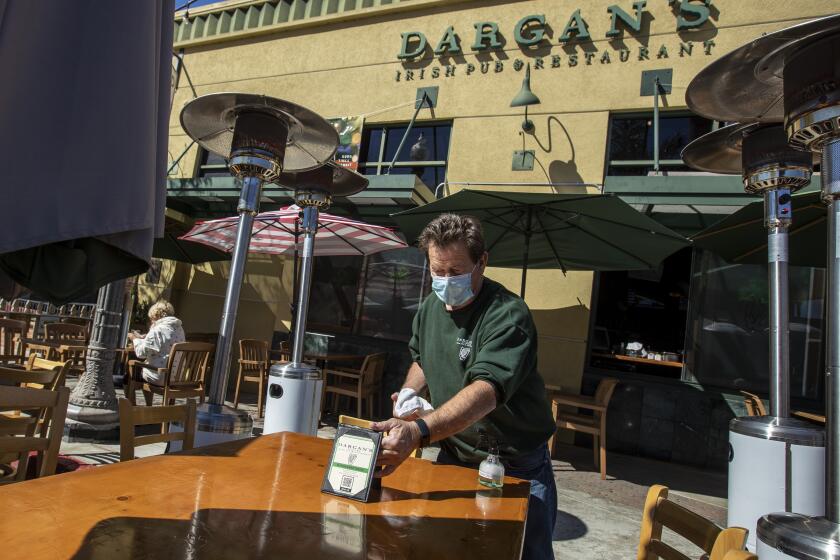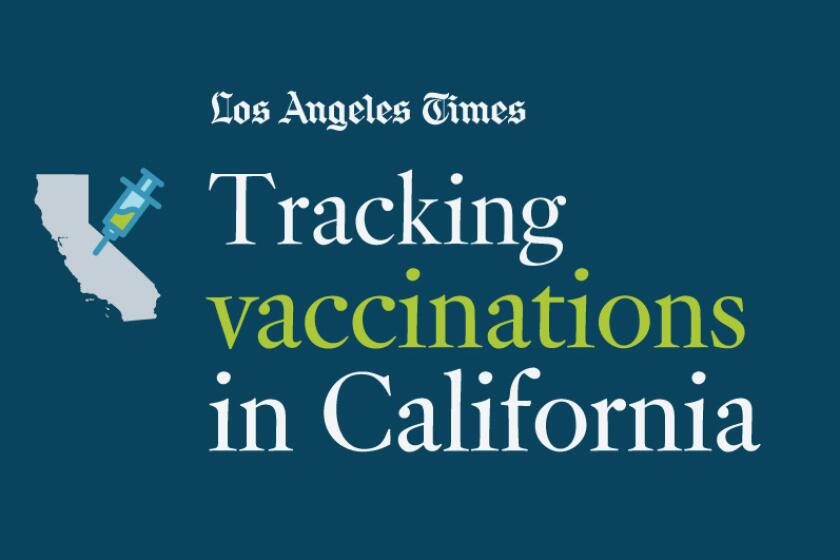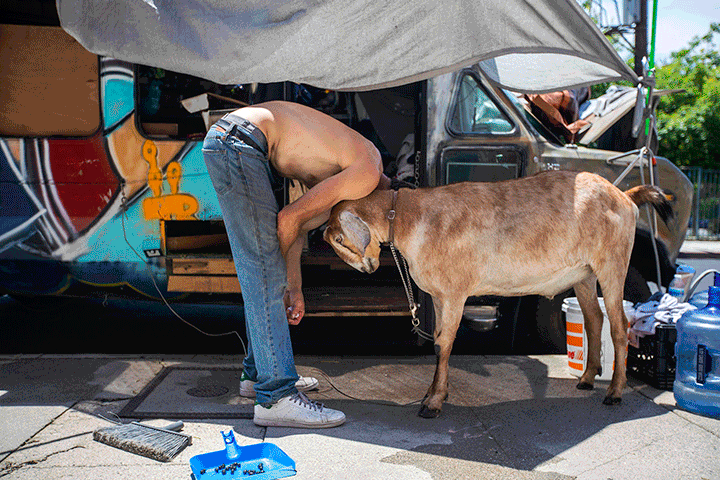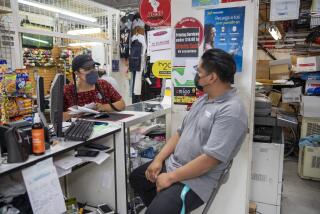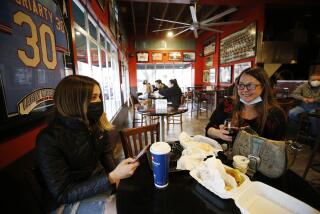35 million Californians now have a reopened economy amid ‘more energy, more optimism’
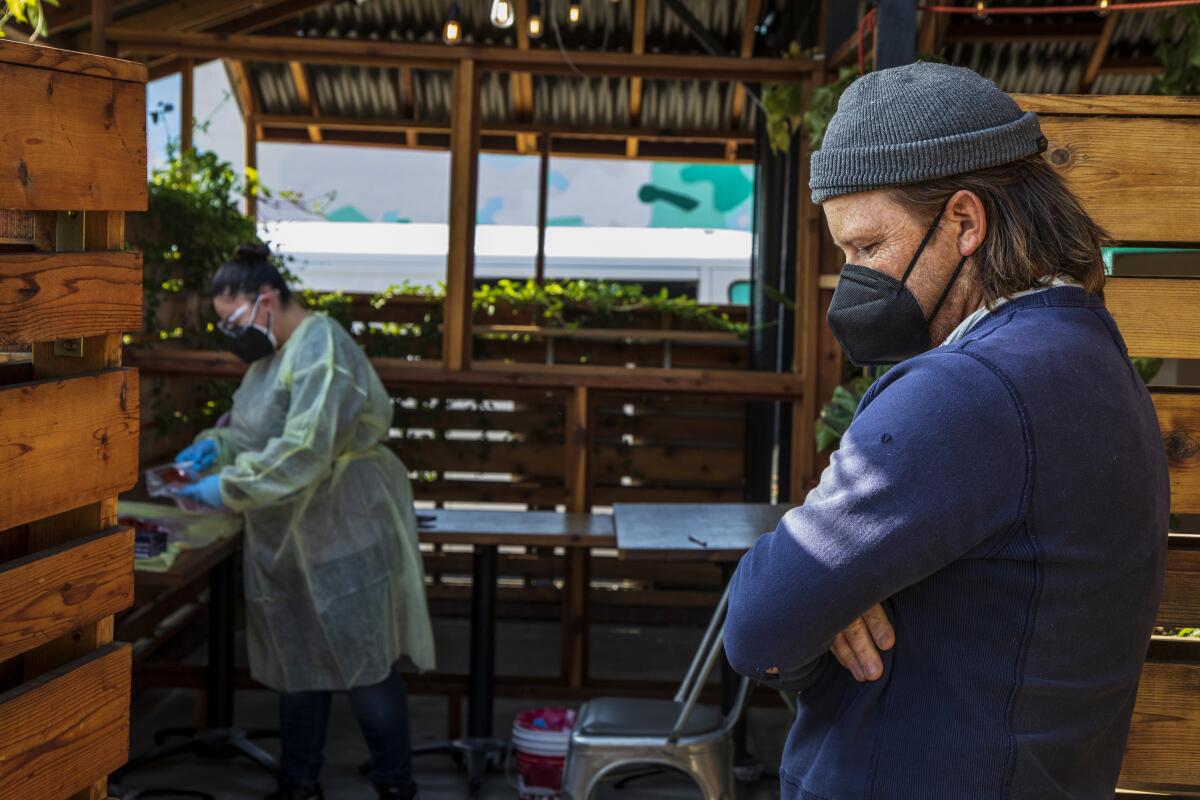
California’s rapid recovery from the winter coronavirus surge went into overdrive Tuesday, as much of the Southland was allowed to reopen swaths of its long-shuttered economies — meaning more than 35 million residents no longer live under the state’s most severe restrictions.
San Diego, Riverside, Ventura and Santa Barbara counties were among those freed from the most stringent tier in California’s color-coded reopening plan, just days after Los Angeles, Orange and San Bernardino also got the green light to reopen restaurant dining rooms and resume limited indoor operations at movie theaters, gyms and other businesses.
The rapid move toward significant reopenings reflects two trends: continued declines in coronavirus case rates and a steady increase in vaccinations. Over the past week, California has reported an average of 3,141 new coronavirus cases per day, a decrease of nearly 40% from two weeks ago, according to data compiled by The Times.
The number of severely ill COVID-19 patients has also tumbled. On Monday, there were 3,058 coronavirus-positive Californians hospitalized statewide, with 827 in intensive care. Both figures are the lowest seen since early November, when the state’s catastrophic fall-and-winter wave was just beginning.
The death rate is also falling, although it remains high. Over the past week, an average of 224 Californians died from COVID-19 each day.
“We saw a lot of movement last week; we’ve seen a lot of movement this week; you’re going to see even more movement next week,” Gov. Gavin Newsom said Tuesday. It means “more and more business activity, more people back in schools” and “more energy, more optimism about the state and its future.”
Southern California reopens: Riverside, Ventura, San Diego counties join others moving into red tier
Ten more counties — including San Diego, Riverside, Sacramento, Ventura and Santa Barbara — have moved into California’s red tier, allowing more businesses to reopen.
The exodus from the strictest purple tier to the more lenient red tier, unveiled through updated data released Tuesday, leaves only a smattering of counties subject to the state’s most severe limitations and represents the widest unlocking of California’s economy in months.
Only 11 counties are left in the purple: Glenn, Yuba, Nevada, San Joaquin, Stanislaus, Merced, Madera, Fresno, Kings, Inyo and Kern.
The tier progression was made possible by a significant shift in California’s reopening strategy, implemented after the state met its self-set goal of administering 2 million COVID-19 vaccine doses in the most disadvantaged communities.
Upon reaching that target, the state began allowing counties with up to 10 new cases per day per 100,000 people (adjusted based on the number of tests performed) to exit the purple tier. Previously, only counties with case rates at or below seven per 100,000 people could move into the red tier.
“This is another strong step forward in our responsible recovery from COVID-19,” San Diego County Supervisor Nathan Fletcher said in a statement. “While it has been a long year, particularly for our gyms and restaurants, the vaccine has given us hope that we can not only save lives, but get our way of life back.”
Ventura County Supervisor Linda Parks also cheered the region’s advancement, saying “we want that to snowball” and lead to a fuller reopening.
But she added: “Even with this opening, COVID is still out there — fortunately, not to the degree that it was before.”
The latest round of reopenings — which come with restrictions and capacity limits — mark a lifeline for small businesses that have been devastated by COVID-19 restrictions.
Experts say about most Americans will need to be vaccinated to bring the coronavirus pandemic under control. Track California’s progress toward that goal.
When Dargan’s Irish Pub in the heart of downtown Ventura was ordered to close to indoor diners, the timing could not have been worse. It was St. Patrick’s Day 2020 — typically one of its busiest days.
Perhaps it is only fitting, then, that precisely one year later, March 17, the restaurant will be welcoming people back inside.
“It’s been a tough year, but we’ve gotten through it,” Dargan’s owner, Liam Sherlock, 62, said Tuesday as he cleared boxes, wiped down tables and prepared to fling the doors back open to the public. “We’re resilient people, aren’t we?”
Many people looked forward to taking advantage of the freedoms they once took for granted.
“It feels great to know that we have some sense of liberty coming back,” said Daniela Villa, 22, as she sipped margaritas with friends outside another Ventura restaurant, Limón y Sal. “We still have to be safe, but we have a little bit more freedom now.”
Inside, servers and waitstaff buzzed as they unstacked tables and chairs that had gone unused for months.
“We’re excited, but we’re also taking precautions,” said Ruben Sanchez, one of the restaurant’s managers. Before the pandemic, they had about 120 employees, he said, most of whom they had to lay off. Now, they’ve hired about 30 back.
“We had to call more people, get more product ... and make sure we have enough beer for tomorrow,” he said of the reopening. “We’re getting back there, little by little.”
Though California has turned a significant corner, the coronavirus could easily rebound if too many people cast off their masks, crowd together and throw caution to the wind before enough residents have been vaccinated, officials and experts warn.
“That we’re here today is not a miracle,” L.A. County Public Health Director Barbara Ferrer said Monday. “Our recovery represents the deep commitment by hundreds of thousands of individuals, and many thousands of businesses, to adhering to safety measures and to making sacrifices that keep each other safe.”
The pandemic has claimed more than 56,000 lives statewide.
Times staff writer Maura Dolan in San Francisco contributed to this report.
More to Read
Sign up for Essential California
The most important California stories and recommendations in your inbox every morning.
You may occasionally receive promotional content from the Los Angeles Times.
